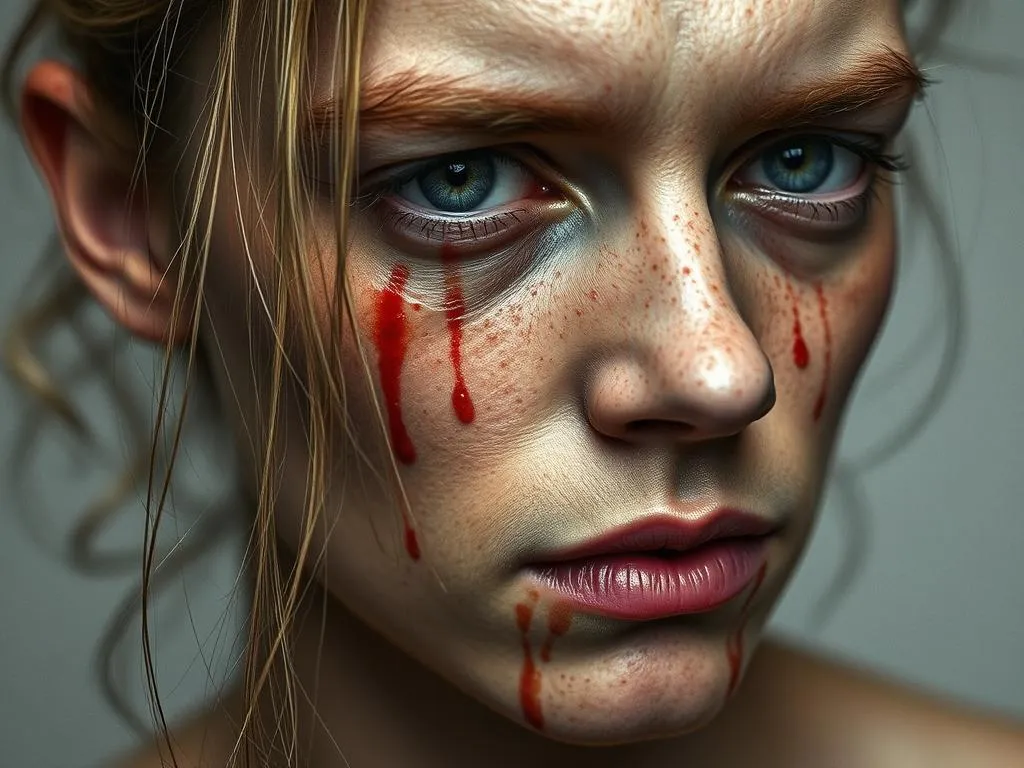
Introduction
Tear stains are a common concern among dog owners, particularly for those who have Maltese dogs. These unsightly reddish-brown streaks below the eyes can be more than just a cosmetic issue; they can indicate underlying health problems or be a byproduct of the dog’s genetics. Understanding the nuances of Maltese tear stains is crucial for any owner looking to maintain their pet’s health and appearance.
The Maltese breed, known for its stunning white coat and playful personality, is particularly susceptible to tear staining. This can lead to emotional distress for both the dog and owner, as well as aesthetic concerns. Addressing tear stains not only enhances the beauty of your Maltese but also contributes to their overall well-being.
Understanding Tear Stains
What Causes Tear Stains?
Tear stains are a result of excessive tearing, which can stem from several factors:
-
Genetics and Breed Predispositions: Certain breeds, including the Maltese, are more likely to develop tear stains due to their facial structure. The shallow eye sockets and prominent eyes can lead to increased tearing.
-
Common Medical Conditions: Conditions such as blocked tear ducts or eye infections can lead to excessive tearing. If the tears do not drain properly, they may accumulate and stain the fur.
-
Environmental Factors: Allergies to dust, pollen, or certain food ingredients can irritate the eyes, leading to tears. Additionally, exposure to irritants like smoke or chemicals can exacerbate the problem.
Symptoms of Tear Stains
Identifying Maltese tear stains can be straightforward. Look for the following visual indicators:
-
Color: The stains typically appear reddish-brown due to a build-up of porphyrin, a pigment found in tears.
-
Texture: The fur may feel matted or sticky due to the moisture from tears.
In addition to these visual cues, your Maltese may exhibit behaviors like rubbing their eyes or excessive tearing, which can further indicate a problem.
The Maltese Breed: Special Considerations
Characteristics of Maltese Dogs
Maltese dogs are small, toy breed dogs, characterized by their long, flowing white coat and cheerful disposition. They require regular grooming to maintain their beautiful coat, and their delicate facial structure necessitates extra care, particularly around the eyes.
Why Maltese Are Prone to Tear Stains
Several anatomical and health factors contribute to why Maltese dogs are prone to tear stains:
-
Specific Anatomical Features: The shape of a Maltese’s face means their eyes are more exposed to environmental irritants, which can lead to excessive tearing.
-
Common Health Issues: Maltese dogs may also suffer from dental issues or other health problems that can indirectly contribute to tear staining.
Diagnosing Tear Stains
When to Seek Veterinary Help
Recognizing when to consult a veterinarian is vital. Seek professional help if you notice:
- Persistent tearing despite treatment attempts.
- Signs of discomfort, such as rubbing their eyes frequently.
- Changes in behavior, indicating pain or illness.
Diagnostic Procedures
When you visit the vet, they may conduct several exams, including:
-
Physical Examination: A thorough check of the eyes to identify any obvious issues like infections or blockages.
-
Tear Production Tests: These tests measure the amount of tears produced to determine if there’s an underlying issue.
Differentiating between cosmetic and medical concerns is essential, as some conditions may require more than simple grooming solutions.
Treatment Options for Tear Stains
Home Care Solutions
Regular grooming is key to managing Maltese tear stains. Consider the following tips:
-
Daily Cleaning: Wipe the area below the eyes with a damp cloth or a specialized tear stain remover to prevent stains from setting.
-
Recommended Cleaning Products: Look for safe, natural options or commercial products specifically designed for tear stain removal.
Dietary Changes
A well-balanced diet plays a crucial role in your dog’s overall health, including tear production:
-
High-Quality Food: Ensure your Maltese is eating a diet rich in nutrients. High-quality dog food can help prevent allergies that may lead to excessive tearing.
-
Supplements: Some supplements, like omega fatty acids, may help improve skin and coat health, potentially reducing tear staining.
Veterinary Treatments
If home remedies are ineffective, your veterinarian may recommend:
-
Prescription Medications: These can treat underlying conditions like infections or allergies.
-
Surgical Options: In severe cases, surgical intervention may be necessary to correct structural issues contributing to tear staining.
Preventive Measures
Routine Care and Maintenance
To prevent Maltese tear stains, establish a consistent grooming routine:
-
Daily Hygiene: Wipe your dog’s face daily to remove any tear build-up and prevent staining.
-
Grooming Routines: Regularly trim the hair around the eyes to reduce irritation and improve visibility.
Environmental Adjustments
Creating a healthy environment can help minimize tear stains:
-
Minimizing Allergens: Keep your home clean and free from dust, pollen, and other irritants that could trigger allergies.
-
Proper Hydration and Diet: Ensure your Maltese has access to fresh water and a balanced diet, as hydration can impact overall health and tear production.
Myths and Misconceptions
Common Myths About Tear Stains
Several misconceptions exist regarding Maltese tear stains:
- Myth 1: Tear stains are solely a cosmetic issue.
-
Reality: While they may appear cosmetic, they can indicate underlying health concerns that need attention.
-
Myth 2: Only grooming can solve the problem.
- Reality: While grooming is important, addressing diet and health issues is equally crucial.
Understanding the Reality
It’s essential to clarify what works and what doesn’t in managing tear stains. Regular cleaning and attention to diet are effective, but they should be part of a comprehensive approach that includes veterinary care when necessary.
Conclusion
In summary, understanding Maltese tear stains involves recognizing their causes, symptoms, and treatment options. From genetics to environmental factors, a variety of elements contribute to this common issue. By implementing routine care and being proactive about your dog’s health, you can effectively manage and prevent tear stains.
The bond between an owner and their pet is strengthened through attentive care, so take pride in maintaining your Maltese‘s health and appearance. Your efforts not only enhance their beauty but also contribute to their overall well-being and happiness.









